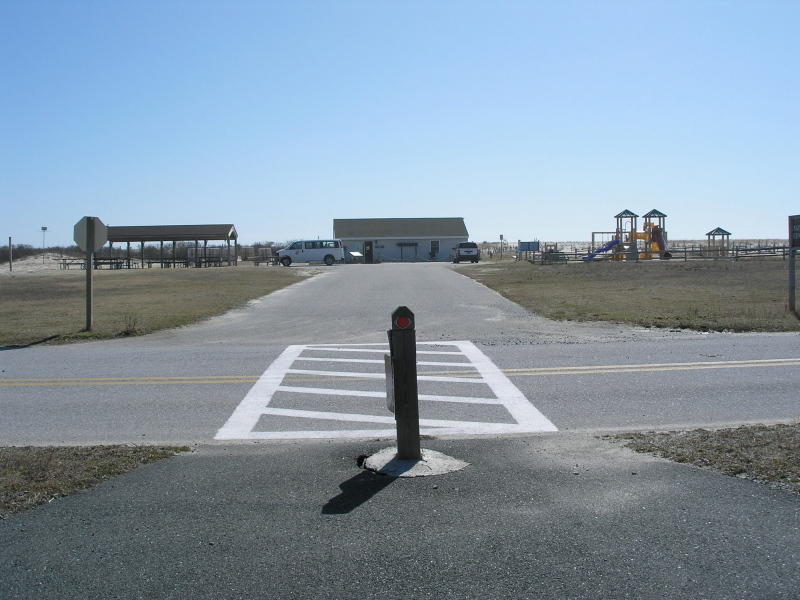Forum Replies Created
-
AuthorPosts
-
July 12, 2012 at 5:02 pm #157035
 Geoffrey CampbellParticipant
Geoffrey CampbellParticipantUGA undergrad program started in 1928 and has been accredited since 1952. Grad program started in 1954.
November 2, 2011 at 2:42 am #159542 Geoffrey CampbellParticipant
Geoffrey CampbellParticipantHi Daniel, whats the paving composition (base, joints, paver dimension) and the utility type and cover, is it a manhole? It’s tough to grasp exactly what’s going on from the given information. Are you looking to camoflouge the access or cover with pavers?
September 2, 2011 at 4:32 pm #160722 Geoffrey CampbellParticipant
Geoffrey CampbellParticipant Would love to utilize existing vegetation as a starting point. From this picture I can make out about one species that seems to be successful, grass. I wish we could have budgeted for a localized vegetation inventory, or even additional site visits. Unfortunately however, this picture + google earth are the extent of my resources.August 30, 2011 at 8:30 pm #160729
Would love to utilize existing vegetation as a starting point. From this picture I can make out about one species that seems to be successful, grass. I wish we could have budgeted for a localized vegetation inventory, or even additional site visits. Unfortunately however, this picture + google earth are the extent of my resources.August 30, 2011 at 8:30 pm #160729 Geoffrey CampbellParticipant
Geoffrey CampbellParticipantThanks a lot! Very useful, I’m going with pitch pine, sweet fern and bayberry. Nitrogen fixation sold me.
June 21, 2011 at 4:43 pm #161778 Geoffrey CampbellParticipant
Geoffrey CampbellParticipantAs an LA in a CE firm, I agree. LA grads are much more prepared out of college than BSCE grads, particularly in grading and site layout. There are some hurdles in understanding detailed SWM, but that can quickly be picked up. Most SWM design is done using help from various computer programs anyways. When and if I get some say-so, I will certainly be hiring LA’s to do site design. If I were an unemployed LA just trying to get my foot in the door, I would definitely be looking hard at CE firms for opportunities… besides there’s a lot more of them. As you mentioned Andrew, the ability to obtain a P.E. is not as easy, but its definitely possible, and in some states sooner rather than later.
October 20, 2010 at 5:05 pm #167308 Geoffrey CampbellParticipant
Geoffrey CampbellParticipantWell I could understand that; however, the requirements for the particular jobs I’ve seen have asked for either a degree in LA or architecure, which leads me to believe the position they have in mind is a staff LA.
October 8, 2010 at 11:10 pm #167415 Geoffrey CampbellParticipant
Geoffrey CampbellParticipantIts a tough issue. The american dream that has been ingrained in much of our population is centered around the suburbian one-acre lot. It doesn’t seem like such a bad thing. Infact, who wouldn’t want to be a landowner with their own plot of land. The problem is that evidence has shown how damaging sprawl can be to the environment. The fact is, suburban living is not sustainable with an ever-increasing population. Yea, nobody should be able to tell anyone how they should live, but when everyone is aware of how damaging the trend is, its gonna get brought up and the alternatives will be proposed. The suburbs can be a nice place to live, but if everyone chooses that lifestyle, sooner or later, our resources and our natural surroundings will suffer because of it…or should I say continue to suffer because of it.
August 11, 2010 at 4:26 pm #168307 Geoffrey CampbellParticipant
Geoffrey CampbellParticipantattached are some photos of the baltimore aquarium plaza
May 21, 2010 at 4:32 pm #169568 Geoffrey CampbellParticipant
Geoffrey CampbellParticipantState Highway has a detail for curb cuts, with a concrete flume -ish thing. But this, as said before, will concentrate the flow and then you have to look at putting in rip rap or some other energy dissipation device, which may not be attractive. A depressed curb, will allow sheet flow and still maintain edging for pavement. On parking spaces though you’ll need wheel stops. How do you plan to transition from pavement to biofiltration surface? 3:1 slope, mini-walls? That always seems to be the trickiest part because of the surface area you need vs. free-board and wall ht.? 3:1 slope is gonna eat up lots of real-estate that could have been used for surface infiltration while a curb wall could be a safety hazard and depending on how tall it is could require an ugly guard rail. The 3:1 slope however is good for pre-treatment if its’ turf or something comparable. Love to hear how it goes. Good luck.
April 8, 2010 at 4:52 pm #170219 Geoffrey CampbellParticipant
Geoffrey CampbellParticipantYou should check out Enkamat, the root system grows in the mat it’self. It’s been highly recommended to me in the past.
good luck.March 30, 2010 at 4:27 pm #170329 Geoffrey CampbellParticipant
Geoffrey CampbellParticipantThis link:
http://www.worldarchitecturenews.com/index.php?fuseaction=wanappln.projectview&upload_id=13729
states that EDAW was part of the design team as well.March 16, 2010 at 4:40 pm #170505 Geoffrey CampbellParticipant
Geoffrey CampbellParticipantPossibly the most cost-effective option would be a modular block wall with vines. However, at this height a modular block wall would probably need some sort of geo-grid reinforcing, and that could effect what is placed behing the wall. Otherwise, a cast-in-place wall with a decorative veneer could work with vines as well.
The ‘plantable’ stones spoken about above are an interesting option as well, but at 12 meters reinforcing could get complicated with hollow stones and voids in the wall. Good luckFebruary 18, 2010 at 2:38 am #171156 Geoffrey CampbellParticipant
Geoffrey CampbellParticipantyes
February 3, 2010 at 5:33 pm #171302 Geoffrey CampbellParticipant
Geoffrey CampbellParticipantMany of the engineers I work with who have been in practice for years are always extremely skeptical of it’s use. The most common excuses I hear seem to deal with the strength of the product in heavy duty applications. That being said, people have also complained about the maintenance, freeze thaw, and even high-heels getting stuck in the surface voids (seriously). Construction always seems to be an issue too . After your parking lot gets built, the runoff won’t infiltrate because the contractors compacted the hell out of the subgrade during construction . I think more research needs to be done and a finer mix would help as well. We have used it on a number of projects successfully. If you have light to meduim duty scenario in an area where runoff will be fairly clean, I don’t see why someone wouldn’t promote its use.
January 20, 2010 at 5:44 pm #171581 Geoffrey CampbellParticipant
Geoffrey CampbellParticipantI can only speak to what the Maryland Stormwater Design manual states, but most of these BMP’s/LID Devices/Enivornmental Site Design facilities, are conceptually the same thing with minor differences in soil profile, flow-splitting requirements and drainage area. Raingardens traditionally were for residentail or small-scale applications, and didn’t require over-flow conveyance (although now MDE states that over -flow is required). Bio-filters/Bio-retention facilities were for larger drainage areas and utilized engineered soil profiles with overflow conveyance (underdrain perf. pvc, and elevated control structure, flow-splitters). Also similar are micro-bio-retention facilities, bio-topes, bio-swales (linear applications), landscape infiltration facilities …etc. None of the above mentioned facilities were credited with quantitave management until very recently. Marylands new reg’s look at swm more as a whole instead of quantitative vs. qualititave control. And like David said it drastically changes the way site layout is approached, in my opinion very beneficial to opportunistic LA’s. Bottom line – lots of terms are used that mean virtually the same thing depending on the review agency you’re dealing with and their definitions.
-
AuthorPosts


